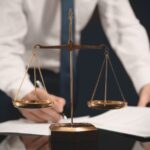Product Liability Elements: Understanding the Core Aspects of Liability in Manufacturing and Sales
When we purchase a product, we expect it to be safe and free from defects. But what happens when something goes wrong? If a product causes harm, understanding the elements of product liability is crucial. Product liability is a legal framework that holds manufacturers, distributors, suppliers, retailers, and others who make products available to the public responsible for the injuries those products cause. This article delves into the core elements of product liability, offering insights into how they protect consumers and ensure accountability in the marketplace.
What is Product Liability?
Product liability refers to the legal responsibility of a manufacturer or seller for producing or selling a faulty product. If a product has a defect that causes harm to a consumer, the manufacturer or seller can be held liable under product liability laws. This liability is based on the idea that companies should be held accountable for the safety of their products and should take responsibility when their products cause harm.
Core Elements of Product Liability
Understanding the key elements of product liability is essential for both consumers and businesses. These elements form the basis of any product liability claim and are critical in determining the outcome of such cases.
1. Defective Product
The first and most obvious element of product liability is the defect in the product. A product is considered defective when it is not reasonably safe for its intended use. There are three main types of product defects:
- Manufacturing Defects: These occur when a product is not made according to its design. It could be due to an error during production that makes the product dangerous.
- Design Defects: These are inherent flaws in the design of the product itself. Even if the product is manufactured perfectly, it is still dangerous due to a design flaw.
- Marketing Defects: These involve improper labeling, insufficient instructions, or the failure to warn consumers of the risks associated with the product’s use.
2. Injury or Damage
For a product liability claim to be valid, the defective product must have caused injury or damage. This injury could be physical, emotional, or financial. The key is to prove that the defect directly caused the harm. Without a demonstrable injury or damage, there is no basis for a claim.
3. Causation
Causation is a critical element in product liability cases. The plaintiff must prove that the defect in the product was the direct cause of their injury or damage. This means showing that the harm would not have occurred if the product had not been defective. Establishing causation often involves expert testimony and detailed analysis of the product and the incident.
4. Use of the Product as Intended
Another important aspect of product liability is the use of the product as intended. The injured party must have been using the product in a manner that the manufacturer could reasonably expect. If the product was being used in an unintended or unforeseeable way, the manufacturer might not be held liable.
The Role of Strict Liability in Product Liability Cases
One of the unique aspects of product liability law is the concept of strict liability. Under strict liability, a manufacturer can be held liable for a defective product, regardless of whether they were negligent. This means that even if the company took all necessary precautions, they could still be held responsible if their product caused harm. The idea behind strict liability is to ensure that the burden of injury does not fall on the consumer, but on the manufacturer, who is in a better position to absorb and manage the costs of liability.
Defenses Against Product Liability Claims
While product liability laws are designed to protect consumers, manufacturers also have defenses they can use to avoid liability. Understanding these defenses is important for anyone involved in a product liability case.
1. Assumption of Risk
If a consumer knowingly uses a product despite being aware of its defects and the potential risks, the manufacturer may not be held liable. This defense is known as the assumption of risk. It is based on the idea that the consumer voluntarily accepted the danger associated with the product.
2. Product Misuse
If the consumer was using the product in a way that was not intended or foreseen by the manufacturer, the manufacturer might not be held liable. This defense is especially strong if the misuse was unreasonable and significantly contributed to the injury.
3. Comparative Fault
In some cases, the injury might be partly due to the consumer’s negligence. For instance, if the consumer ignored safety warnings or instructions, they might share some of the blame. Comparative fault allows the court to reduce the amount of damages awarded to the plaintiff based on their degree of fault.
FAQs about Product Liability
Q: What should I do if I’m injured by a defective product?
A: If you’re injured by a defective product, seek medical attention immediately. Afterward, keep the product, its packaging, and any receipts as evidence. Contact an attorney who specializes in product liability cases to explore your legal options.
Q: Can I file a product liability claim for emotional distress?
A: Yes, emotional distress can be a part of a product liability claim if it can be proven that the defective product caused significant emotional harm. However, these cases can be more complex and often require expert testimony.
Q: How long do I have to file a product liability lawsuit?
A: The time limit for filing a product liability lawsuit varies by state, known as the statute of limitations. It’s crucial to file within this timeframe, or you could lose your right to pursue compensation.
Conclusion
Understanding the elements of product liability is essential for both consumers and businesses. These elements form the foundation of any product liability claim and are critical in ensuring that the responsible parties are held accountable. Whether you’re a consumer who has been harmed by a defective product or a business looking to mitigate risks, knowing these elements can help you navigate the complexities of product liability law.
Remember, product liability is about more than just assigning blame—it’s about ensuring that products on the market are safe for everyone. By holding manufacturers accountable, we can help create a safer environment for consumers.






